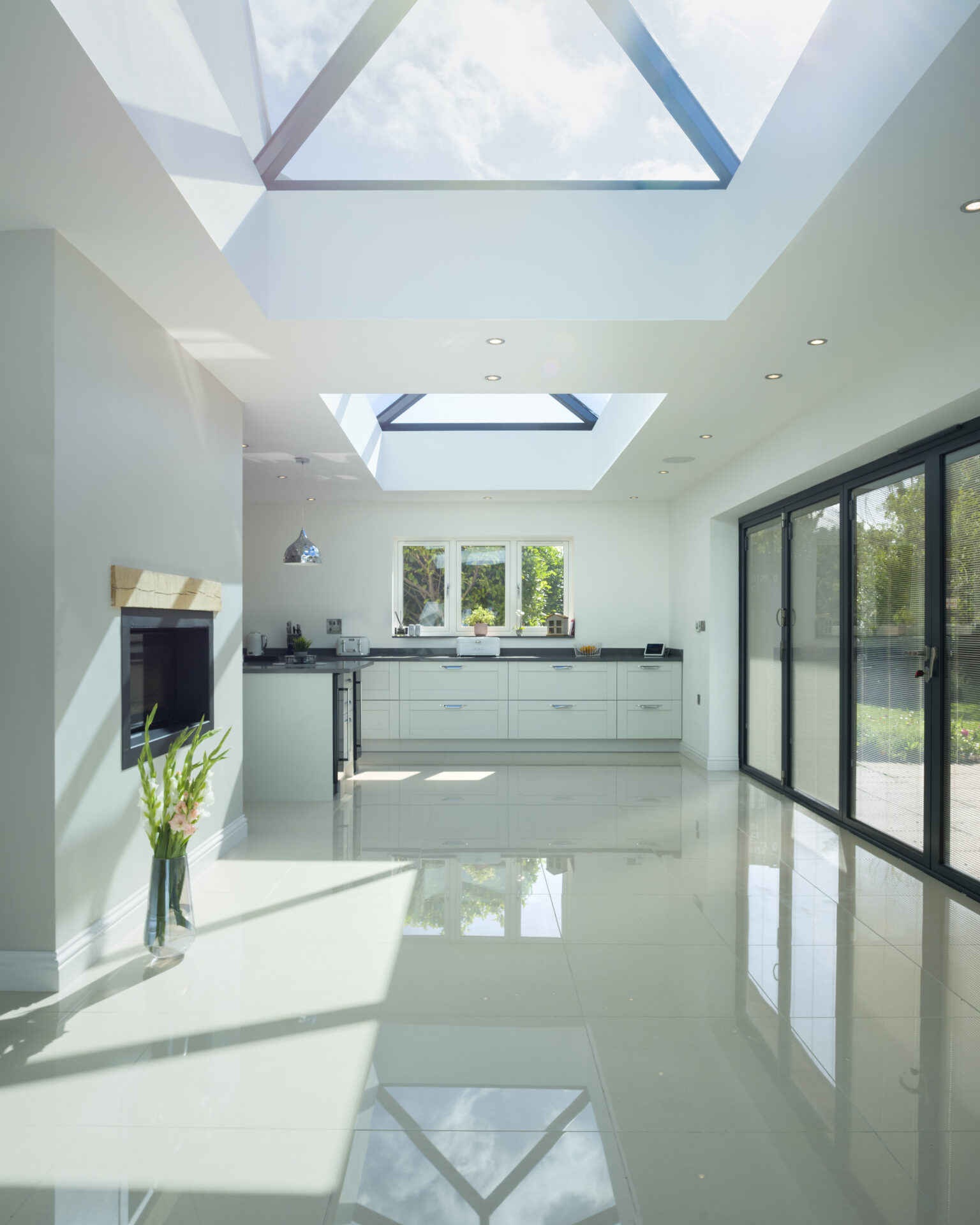Last Updated on 15 November 2024 by Team GFD
Roof lanterns can significantly enhance a home by increasing the sense of space, allowing more natural light to flood the room, improving energy efficiency, and providing additional ventilation.
When it comes to enhancing the aesthetic and functionality of your home, roof lanterns often emerge as an enticing project. These remarkable architectural elements not only enhance a home’s appearance but also harness the power of sunlight, creating an illusion of greater space and openness within the rooms.
However, like any home improvement project, there are aspects to consider before making the leap into installing a roof lantern.
In this article, we’ll discuss everything roof lantern-related and answer some popular questions including those relating to their energy efficiency, if planning permission is required to install them and how they can add value to a home.
Looking for something quick? Jump ahead:
- Are roof lanterns a good idea?
- Pros and cons of a roof lantern
- Do roof lanterns need planning permission?
- Does a roof lantern add value?
- Will a roof lantern be energy efficient?
- Style your home with a modern roof lantern
- FAQs
Are roof lanterns a good idea?
The decision to install a roof lantern hinges on various factors, in particular the desired outcome and the practical considerations involved.
Pros and cons of a roof lantern
First, let’s delve into the pros and cons to weigh the worthiness of adding a roof lantern to your home.
Pros of a roof lantern
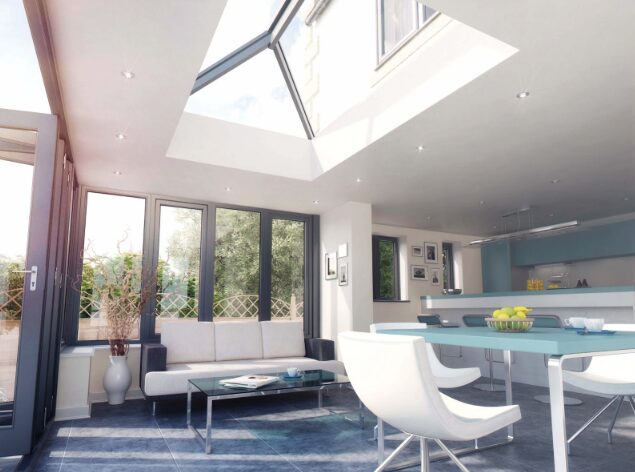
Our Atlas Aluminium Roof Lanterns collection has a wide range of stunning lanterns to suit any preference.
The main pros of roof lanterns are:
Sense of Space
Roof lanterns have a magical quality of expanding the perceived space within a room. By introducing an overhead focal point, it draws the eye upwards, creating an illusion of a larger, more open area. This is perfect if you want your space to feel much bigger.
Natural light
Roof lanterns are designed in such a way that allows them to maximise the amount of natural light entering a room. With their glazed structure and strategic placement in a home, they’ll allow sunlight to flood in, brightening up the space and creating a welcoming ambience from the get-go.
With this, a roof lantern will reduce the dependency of artificial lighting during the day and can help you save money on electricity bills.
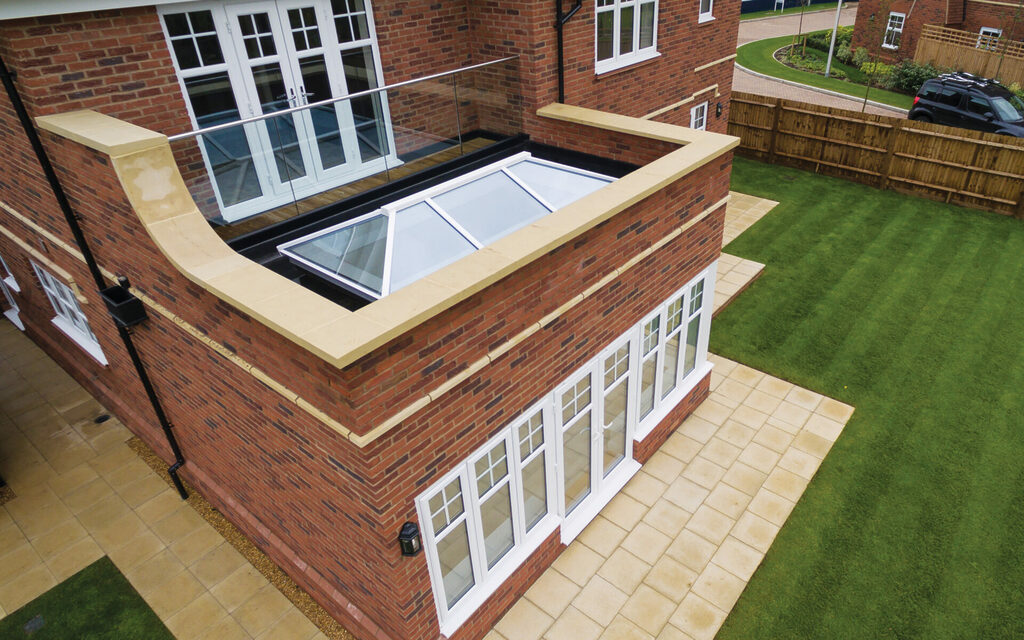
All our roof lanterns come with a fantastic 10 year guarantee to give you peace of mind.
Energy efficiency
Modern roof lanterns often feature advanced thermal insulation technology, as well as thermally broken frames and high performing glazing. These elements together help to minimise heat loss during the colder months of the year and also help to reduce heat gain in the warmer months.
This not only means improved energy efficiency, but also potentially lowers heating and cooling costs too.
Ventilation
When it comes to ventilation, roof lanterns don’t disappoint as they provide the option to add openers to them, allowing airflow into a room instantly.
Cons of a roof lantern
When it comes to the cons of a roof lantern, they are:
Heat Loss
While some roof lanterns offer abundant natural light, they can also contribute to heat loss. If you choose a lantern without proper insulation or energy-efficient glazing, they might impact the room’s temperature, especially in colder climates.
At GFD Homes, all our lanterns are made from the highest quality of materials so that they can improve energy efficiency ratings of a home instantly.
Maintenance
Maintenance can be a consideration, depending on the design and materials used. Cleaning and upkeep may be needed periodically, especially for larger roof lanterns or those in areas prone to debris accumulation.
As we appreciate it can be difficult to regularly gain access to a roof lantern for cleaning, we’re pleased to provide self-cleaning glass as standard for every roof lantern in our collection. This means you don’t need to worry about constantly reaching your lantern to clean it.
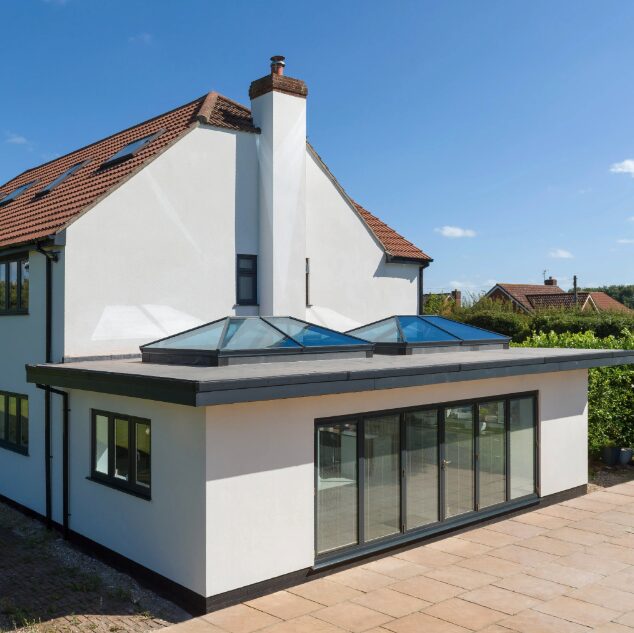
2 Korniche Roof Lanterns installed on a roof with bifolds in view too.
Do roof lanterns need planning permission?
Whether a roof lantern requires planning permission can vary based on your location and the specific regulations in place.
In many cases, roof lanterns fall under permitted development rights, as long as you adhere to the development guidelines listed below.
- 1) The roof lantern should not extend more than 150mm beyond the sloping plane of the current roof.
- 2) The roof lantern height should not exceed the highest point of the existing roof.
- 3) If positioned on a side elevation roof slope, the roof lantern must incorporate obscure glazing.
- 4) Unless the height is at least 1.7m above the floor, no openings are permitted in the roof.
We recommend consulting with local authorities or a professional before installation for the most up-to-date advice.
Does a roof lantern add value?
A well-designed roof lantern can potentially add value to your home by augmenting its aesthetics and functionality.
Buyers often appreciate the enhanced natural light and sense of space, making your property more appealing in the real estate market.
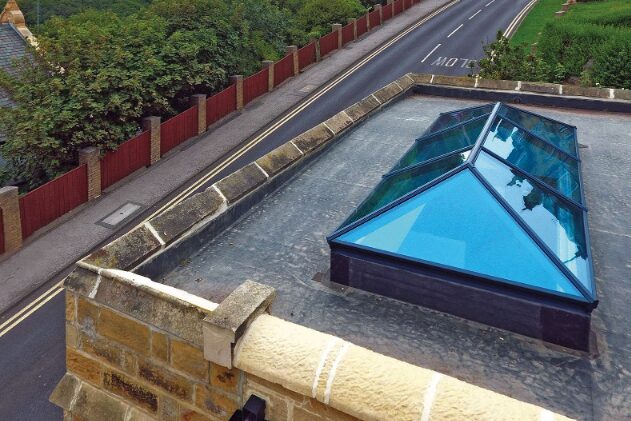
With its impressive innovative design, Korniche Aluminium Roof Lantern are the ‘fastest lantern to install on the market’.
Will a roof lantern be energy efficient?
The energy efficiency of a roof lantern largely depends on its design, glazing and installation.
Opting for more energy-efficient glass and proper insulation can mitigate heat loss concerns, making it more environmentally friendly and cost-effective in the long run.
Style your home with a modern roof lantern
Modern roof lanterns come in various styles and materials, offering versatility to match diverse architectural preferences.
From sleek, minimalistic designs to more ornate structures, you can choose a roof lantern that complements your home’s aesthetics seamlessly.

With the advantages that roof lanterns offer a home, it’s no surprise that glazed roofs have become a popular addition to many homes over the past few years.
If you would like to see a roof lantern in person and live close to our Teesside showroom, call us on 01642 309576 to book a visit. Alternatively, if you’re unable to visit, don’t worry! You can browse our website and purchase a roof lantern right from the comfort of your own home.
FAQs about getting a roof lantern
Are roof lanterns energy-efficient?
When outfitted with energy-efficient glazing and proper insulation, roof lanterns can be energy-efficient, reducing heat loss and minimising the impact on your home’s temperature regulation.
Do roof lanterns require a lot of maintenance?
Maintenance requirements can vary based on design and materials. Regular cleaning may be needed, but advancements in materials have led to more low-maintenance options in recent years.
For more information on maintenance, read our ‘How To Clean Roof Lanterns‘ article.
Are roof lanterns suitable for all types of homes?
Roof lanterns can be adaptable to various home styles, but their suitability might vary. Consulting with professionals can help determine the feasibility and best design for your specific home.
Can roof lanterns be customised?
Yes, roof lanterns can offer customisation options, allowing homeowners to tailor designs, sizes and materials to suit their preferences and architectural needs.
How much are roof lanterns?
Determining the exact cost of a roof lantern can be tricky, as it depends on several factors including the lantern price, installation costs and delivery costs too.
Check out our ‘How Much is a Roof Lantern’ article for more information on pricing.
What’s the difference between roof lanterns and roof lights?
When it comes to Roof Lanterns Vs Roof Lights and which is the better option, it’s important to understand that the ‘better option’ all depends on your specific needs and preferences.
If you’re in need of maximum natural light in a room and airflow, roof lanterns are better at this thanks to their ability to channel light from all angles, along with the option to add rafters to allow airflow into the room.
However, if you’re not that bothered about airflow and don’t want something that can be seen from outside your property, roof lights are the better option as they sit low to the roof, so you won’t see them when you’re standing outside.
